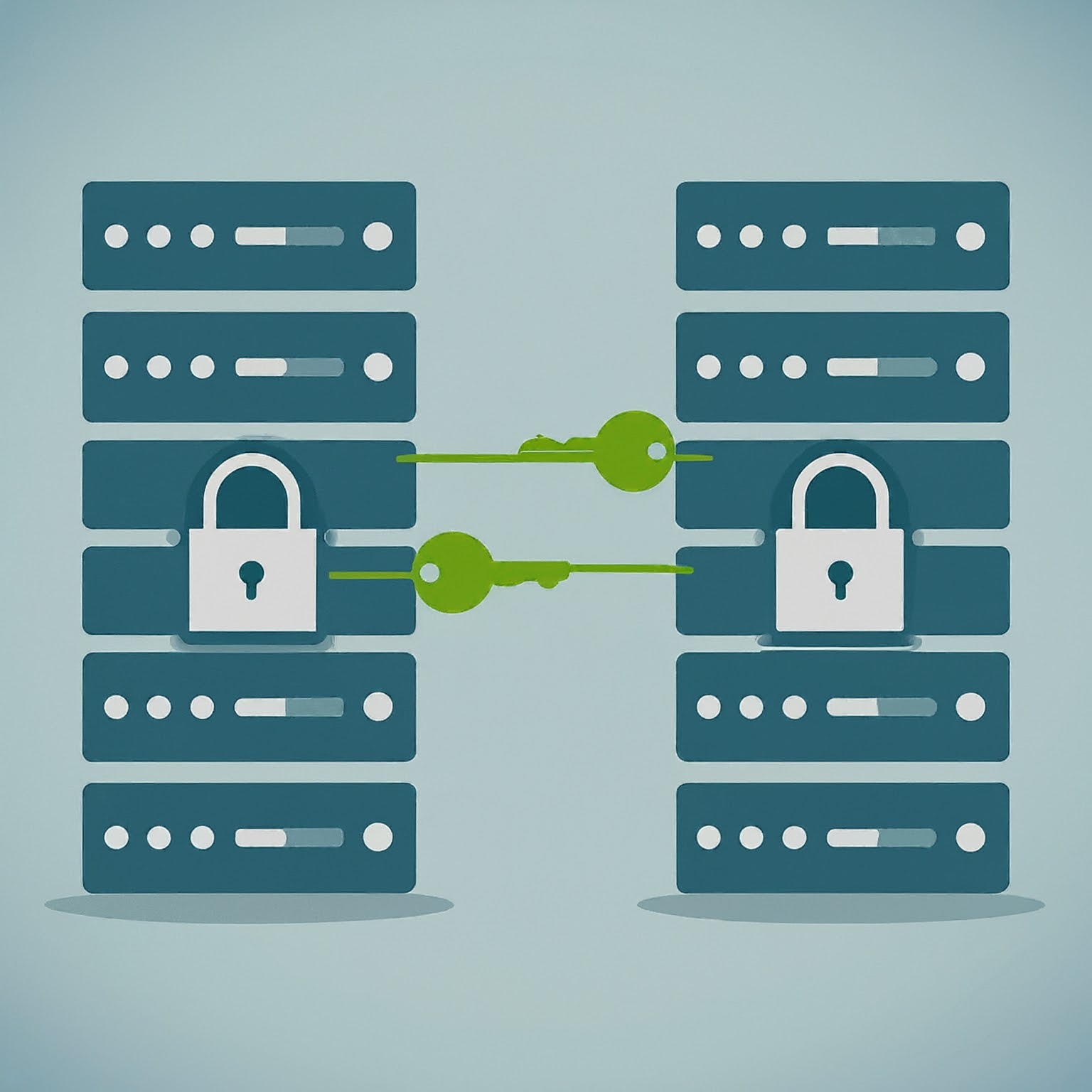Guide to Basic Auth in Microservices: A Double-Edged Sword
 Srijan Rastogi
Srijan Rastogi
Microservices architectures, with their modularity and distributed nature, have become the de facto standard for building modern applications. However, this distributed approach introduces unique challenges in securing communication between services and user access. Authentication, the process of verifying an entity’s identity, becomes crucial in this context. Basic authentication, a seemingly straightforward approach, can be tempting due to its ease of implementation. However, it’s essential to understand its limitations and weigh them against its benefits before deploying it in a microservices environment.
Demystifying Basic Authentication
Basic authentication is a fundamental HTTP authentication scheme. It involves transmitting a username and password combination directly within the authorization header of an HTTP request. This combination is Base64 encoded, a simple conversion method that transforms plain text into a more compact, non-human-readable format.
Here’s a closer look at the basic flow of communication:
Client Initiates Request: The client application, such as another microservice or a user interface, constructs an HTTP request to access a specific resource on the server.
Authorization Header Construction: If user authentication is required, the client includes an “Authorization” header in the request. This header contains the username and password pair concatenated with a colon separating them.
For example:Authorization: Basic QWxhZGRpbjpvcGVuYnNlY3JldA==Base64 Encoding: This username-password string is then Base64 encoded. Base64 encoding doesn’t provide encryption, but it makes the data appear nonsensical, offering a basic level of obscurity.
Request Transmission: The complete HTTP request, including the authorization header, is sent to the server.
Server Receives Request: The server receives the request and extracts the credentials from the authorization header.
Credential Decoding: The server decodes the Base64 string to retrieve the original username and password.
User Store Validation: The server checks these credentials against a predefined user store. This user store could be a local database on the server itself, an external authentication service like Auth0 or Okta, or a directory service like LDAP (Lightweight Directory Access Protocol).
Access Granted/Denied: If the username and password match a valid entry in the user store, the server grants access to the requested resource and sends a successful response (typically HTTP status code 200). Otherwise, the server denies access and sends an unauthorized response (HTTP status code 401).
Benefits of Basic Auth
While not the most secure option, basic authentication offers some advantages in a microservices environment, especially during initial development stages:
Simplicity at its Core: Basic authentication is incredibly easy to implement on both the client and server sides. Most programming languages offer built-in libraries and frameworks that handle Base64 encoding and decoding, as well as authorization checks on the server. This ease of use can be appealing for rapid prototyping or internal deployments where security is not the top priority.
Lightweight Footprint: Basic authentication adds minimal overhead to the request-response cycle. The Base64 encoding process is computationally inexpensive, and server-side validation is typically straightforward. This can be beneficial for performance-sensitive microservices where every millisecond counts.
Familiarity Breeds Speed: Many developers are familiar with basic authentication due to its prevalence in web applications. This familiarity can speed up development and reduce the learning curve when integrating authentication into a microservices architecture.
However, it’s crucial to remember that these benefits come with significant security limitations.
Security Concerns and Limitations: The Dark Side of Basic Auth
Despite its apparent simplicity, basic authentication comes with security drawbacks that must be carefully considered before deployment:
Insecure Transmission: Achilles’ Heel of Basic Auth: The biggest security concern with basic authentication is the transmission of credentials. The username and password are sent within the authorization header in plain text before Base64 encoding. This encoding does not provide encryption. If an attacker intercepts the request traffic (through network sniffing or man-in-the-middle attacks), they can easily decode the Base64 string using readily available tools and gain access to the username and password. This can lead to unauthorised access to resources, potential data breaches, and even account takeovers.
Session Management: A Missing Piece in the Puzzle: Basic authentication doesn’t provide any built-in mechanism for session management. Each request requires including the credentials in the authorization header, making it unsuitable for user authentication in a microservices architecture. Imagine a user logging in to a web application built on microservices. With basic auth, every request to different microservices (e.g., user profile service, shopping cart service) would require sending the username and password repeatedly, exposing them to potential interception.
Credential Reuse: A Recipe for Disaster: If the same username and password combination are used for multiple microservices, a compromise in one service can potentially grant access to others. Imagine a scenario where a developer uses the same credentials for all internal development microservices. If an attacker gains access to these credentials through a vulnerability in one service, they can potentially access all other services, potentially exposing sensitive data or disrupting critical functionality.
Scalability Concerns: A House of Cards: As the number of microservices grows, managing user credentials across all services becomes cumbersome. Basic authentication doesn’t offer centralized control or easy user management capabilities. Imagine a large e-commerce application built on microservices. With basic auth, managing user accounts and access permissions for thousands of users across numerous services would become a complex and error-prone task.
Alternatives to Basic Auth: Building a Secure Foundation
Given the security limitations, basic authentication is generally not recommended for user authentication in a production microservices environment. Here are some more secure and scalable alternatives:
API Gateway with Token-Based Authentication: A Secure Checkpoint: An API gateway acts as a single entry point for all API requests coming from clients (web applications, mobile apps, etc.). It can implement token-based authentication using mechanisms like JSON Web Tokens (JWT). Clients first obtain a JWT token by logging in to a central authentication service (e.g., centralized user database, identity provider like Auth0). Subsequent requests include the JWT token in the authorization header, allowing the API gateway to validate the token and grant access to authorized microservices. This approach offers several benefits:
1. Centralized Control: User accounts and access permissions are managed in a central location, simplifying administration and reducing the risk of credential sprawl.
2. Session Management: JWT tokens can be configured with expiration times, eliminating the need for traditional session management on individual microservices.
3. Security Enhancements: JWT tokens can be signed with cryptographic keys, ensuring their integrity and preventing unauthorized modifications.OAuth 2.0: An Industry Standard for Secure Authorization: This industry-standard authorization framework provides a secure way for applications (microservices in this case) to access resources on behalf of a user. It involves obtaining an access token from an authorization server using user credentials or authorization codes. Microservices can then validate these tokens to grant access. OAuth 2.0 offers a more robust and flexible approach to authorization compared to basic auth, with features like:
1. Multiple Grant Types: Supports different scenarios like user authentication, client credentials grant for machine-to-machine communication, and refresh tokens for extending access.
2. Separation of Concerns: Decouples authentication from authorization, allowing microservices to focus on core functionalities while relying on a dedicated authorization server for user identity verification.
3. Scalability and Extensibility: Designed to handle large-scale deployments and can be integrated with various identity providers and security tools.
4. Mutual TLS (mTLS): Securing Machine-to-Machine Communication: This technique leverages certificates for both client and server authentication. Microservices establish trust by presenting and verifying mutually trusted certificates before communication can occur. mTLS provides strong encryption and identity verification, making it ideal for secure communication between microservices, especially when dealing with sensitive data.
Securing GoFr Applications with Basic Auth Middleware
GoFr, a lightweight Go framework, offers flexibility in building web applications. While it prioritizes simplicity, incorporating security measures like authentication becomes crucial for protecting sensitive data and functionality. Let’s explore implementing basic authentication using middleware in GoFr.
When to Use Basic Auth?
Basic auth can be appropriate for:
Simple Applications: Quick prototyping or applications with minimal security requirements.
Internal APIs: Securing communication between internal microservices within a trusted environment.
Implementing Basic Auth Middleware in GoFr
GoFr offers two ways to implement basic authentication
Predefined Credentials:
Use EnableBasicAuth(username, password) to configure GoFr’s authentication middleware with pre-defined credentials.
package main
import "gofr.dev/pkg/gofr"
func main() {
app := gofr.New()
app.EnableBasicAuth("admin", "secret_password") // Replace with your credentials
app.GET("/protected-resource", func(c *gofr.Context) (interface{}, error) {
// Handle protected resource access
return nil, nil
})
app.Run()
}
Custom Validation Function:
Use EnableBasicAuthWithValidator(validationFunc) to inject your custom validation logic for credentials in authentication middleware.
The validationFunc takes the username and password as arguments and return true if valid, false otherwise.
package main
import (
"gofr.dev/pkg/gofr"
"gofr.dev/pkg/gofr/container"
)
func validateUser(c *container.Container, username, password string) bool {
// Implement your credential validation logic here
// This example uses hardcoded credentials for illustration only
return username == "john" && password == "doe123"
}
func main() {
app := gofr.New()
app.EnableBasicAuthWithValidator(validateUser)
app.GET("/secure-data", func(c *gofr.Context) (interface{}, error) {
// Handle access to secure data
return nil, nil
})
app.Run()
}
Conclusion: Choosing the Right Tool for the Job
Basic authentication offers a simple approach to authentication in microservices, but its simplicity comes at the cost of security. While it might be tempting for quick prototyping or internal deployments with minimal security concerns, it’s generally not recommended for production environments, especially for user authentication.
For robust and scalable security in a microservices architecture, consider implementing token-based authentication with an API gateway or industry-standard protocols like OAuth 2.0. These approaches provide centralized control, session management, and stronger encryption mechanisms, protecting your microservices and user data from unauthorized access.
Here are some additional points to consider for a comprehensive security strategy:
Security Best Practices: Regardless of the chosen authentication method, always follow security best practices. These include enforcing strong password policies, using secure communication protocols like HTTPS, and regularly updating software and libraries to address vulnerabilities.
Threat Modeling: Conduct thorough threat modeling exercises to identify potential security risks in your microservices architecture. This will help you choose the most appropriate authentication approach and implement additional security measures to mitigate identified threats.
Scalability and Maintainability: Consider the long-term scalability and maintainability of your authentication solution. Token-based authentication with centralized management can be easier to scale and maintain as your microservices ecosystem grows.
By carefully evaluating your security requirements and choosing the right authentication approach, you can ensure a secure and reliable foundation for your microservice architecture. Remember, security is an ongoing process, and it’s essential to continuously monitor and improve your security posture to adapt to evolving threats.
GoFr’s Website:https://gofr.dev
GoFr’s Github Repo:https://github.com/gofr-dev/gofr
If you like GoFr please support us by giving the repository a 🌟
Happy Coding 🚀
Thank you for reading until the end. Before you go:
Please consider liking and following! 👏
You can also go through my other article on API Key Authentication
Subscribe to my newsletter
Read articles from Srijan Rastogi directly inside your inbox. Subscribe to the newsletter, and don't miss out.
Written by

Srijan Rastogi
Srijan Rastogi
GoLang apprentice by day, sensei by night. Learning and building cool stuff, one commit at a time.